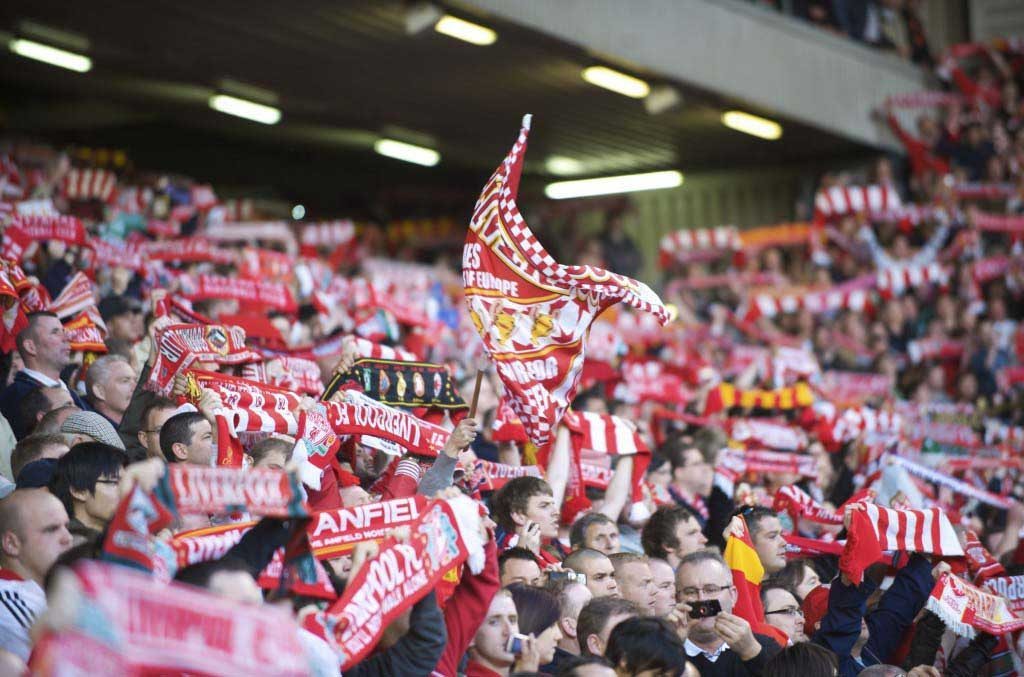
EVEN in the impatient world of modern football, Liverpool supporters around the world are still famed for their loyal, unswerving support. While in recent years a more sedate Anfield has homogenised with other Premier League crowds and the lines between supporters and customers have become increasingly blurred, Liverpool’s support remains, at least in a visual sense, sufficiently unique for the club to shamelessly brand the notion of “The 12th Man”.
The crowd can still “get up” for big games – the derbies, the spats with Manchester United, and the clichéd “European nights” – and elevate its heroes to God-like status. Just ask Robbie Fowler. However, worship isn’t the preserve of the local boys — far from it — and the recent adulation afforded to Fernando Torres and Luis Suarez is testament to that.
While Suarez, and Torres at his peak, were truly worthy of the fans’ exultation, even serial underachievers — and an often disinterested Stan Collymore comes to mind here — have heard their name boomed out consistently from the behind the goal at the Walton Breck Road end of Anfield.
The latest pretender to unworthy acclaim is “Mario Fantastico” himself whose name has already cascaded down from the Kop at the merest whiff of his enigmatic talent. In the descriptor of Balotelli, some might argue that the word talent is misplaced, that myth wins out over reality; that the earrings sparkle brighter than player. And yet the patrons of Anfield, despite their pockets being filched to the tune of £50 a visit, have remained patient.
But what about the honest lads in Red who have felt the wrath of the home crowd over the years?
All but the fiercest loyalists have their own particular scapegoats; a channel for individual frustration when defeat stares you in the face.
Irrational personal hatred for just one player tends to be spread around. My mate Dave lives in Berlin but you can hear him slagging Glen Johnson from a bar near The Brandenburg Gate.
I’ve spent the season gently muttering under my breath, with occasional bursts of open vitriol, at the calamity that is Dejan Lovren. This £20m, lauded acquisition with his immaculately slicked-back dark hair, appears to have been playing with concussion since August. I’m sure my abuse goes over his head — just like most of the crosses into our box.
Poor old Laser Markovic hasn’t been seen near the touchline since my dad blew a gasket on him, admittedly in the Serb’s second game, from his seat in Row 10 of the Centenary Stand. “Pass the ball, not the buck Markovic, you f****n coward!”
Boss Reds, us.
But every now and then a player emerges who the Anfield crowd — as a collective — just refuse to take to their hearts. Being utterly crap is sometimes the qualification, and I’ll cite Erik Meijer here as someone who certainly justifies the criteria on ability. Yet “Mad Erik”, despite two left feet and an awkwardness that made Peter Crouch look balletic, holds a special place in Liverpool hearts on the strength of two League Cup goals at Hull, a clenched fist for the crowd at corners and an appearance in the main square in Dortmund at the 2001 UEFA Cup Final, wearing a Liverpool shirt and holding a can of lager (Tuborg if you’re asking).
No, the targets for widespread Anfield abuse are often special cases with circumstantial, geographical, sometimes even political motives as the root of their persecution, regardless of their ability or longevity. I’m sure you can think of a few more, but I’ve come up with five poor unfortunates whose Liverpool careers easily outstrip reputations which are the legacy of their strained relationship with the Anfield crowd.
Jack Balmer
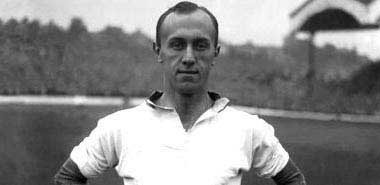
I’ve always been intrigued by the curious case of Jackie Balmer, a man well before my time (and I go back a bit) whose goalscoring record belies some unforgiving times at the hands of an especially caustic pre and immediate post-War Anfield populace. Perhaps he got off on the wrong foot with the crowd on his account of his Everton background having initially signed in at Goodison as an amateur. His uncles William and Bob had also turned out for the Blues. However, at the time of his recruitment by Liverpool in 1935 the local football battle lines weren’t as fiercely contested as they are today, and this West Derby lad’s unpopularity was founded elsewhere.
Despite being locally-born it was known that Balmer had been well-educated — at Liverpool Collegiate — and his relative middle-class background affected the crowd’s perception of his talent. By his own admission, this speed-merchant whose guile on the ball was matched by a strong shot despite a pencil-thin frame, wasn’t a fan of the game’s rougher arts. He once said, “Maybe I didn’t go in for the crunch tackle but that kind of thing wasn’t my idea of football. I was never a coward at the game but I got a shudder when I saw the boot going in.”
A stylist in the era of the traditional English centre-forward, his apparent refusal to “mix it” sullied his relationship with a crowd drawn exclusively from the mean streets of 1930s and 1940s Liverpool. This was despite Balmer scoring 110 goals in 310 games between 1935 and 1952. Even allowing for his century of goals and 17 years’ service, spanning the War, Jackie’s occasional errant finishes earned him the imprecise nickname “Over the Bar-mer”.
His critics were silenced during his best season when Balmer was joint-top scorer as Liverpool pulled off their epic title win of 1946-47. Perhaps it is symbolic that his strike partner-in-crime was Geordie, Albert Stubbins. Despite a record three consecutive hat-tricks against Portsmouth, Derby and Arsenal during this famous campaign, there was no place on the cover for Jackie Balmer on the cover of Sgt. Pepper. Stubbins’ name still features in a ditty sung by bored Kopites today, while Balmer’s name has faded into the dim and distant past known only by a dwindling number who delve back into the history of Liverpool’s pre-Shankly era.
Sammy Lee
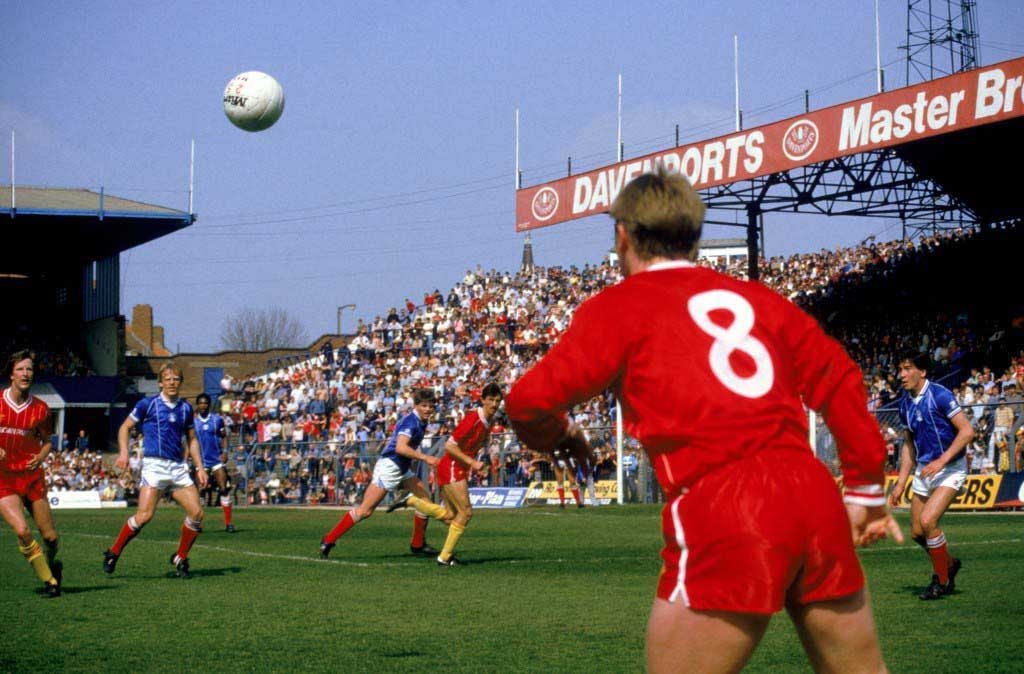
“Ignore the woollies, Sammy” came the defiant cry from a lone Kopite at one my first Anfield games in the late seventies. The truth was that young Sammy Lee, another true Scouser, was never particularly popular among his own people, never mind the sour-faced moaners from Lancashire and Yorkshire who were the first out-of-towners to latch themselves on to “Liverpool” Football Club.
A debutant in 1978 at the age of 18, Lee stood out with his ruddy cheeks and shock of strawberry blonde hair in a team of dark-haired European Cup winners and ubiquitous perms and moustaches. Not so much walking, as bustling in at 5 feet 7 inches, Lee was often described as a “pocket-battleship” — a strange metaphor to describe a demonic workrate on the right of midfield. He eventually saw off another local boy, Jimmy Case and was a regular fixture between 1980 and 1984 before injuries reduced him to the role of occasional substitute and squad player. Despite his relative limitations, Lee has a medal haul — three League titles, four League Cups and two European Cups — that puts many a Liverpool leading light of the past 25 years to shame.
Notwithstanding his industrious game, the crowd couldn’t warm to this stocky little street fighter. Thighs like tree trunks exaggerated his diminutive frame and the away fans’ terrace ditty, “He’s fat, he’s round, his arse is on the ground” did him a huge disservice. In later years, Liverpool fans ended up singing the same song for Sammy, doused with a measure of irony, but not altogether convincing that it came without hint of malice towards their own player.
Typically, his finest hour when he man-marked Bayern Munich’s Paul Breitner out of the 1981 European Cup semi-final, is remembered as a stroke of Bob Paisley genius facilitated by a tireless display from Lee. The truth is that his underrated football brain outweighed inexhaustible lungs at the forefront of a tactical masterclass.
In the latter part of Paisley’s reign, Kopites had got used to exotic talents of big-money signings like Dalglish as Liverpool’s eighties hegemony continued. Lee was an unheralded cog in the wheel, but if the wheels occasionally came off, workrate wasn’t enough to spare the unsung Lee from the success-spoilt Anfield bullies. If the “wools” were the first to single out Sammy for abuse, then the Scousers weren’t far behind. The irony, and perhaps the lesson, is that Lee was the last locally-born player to come through the Melwood ranks and make any first team inroads for over a decade, until the emergence of Fowler and Steve McManaman in the mid 1990s.
Kevin MacDonald
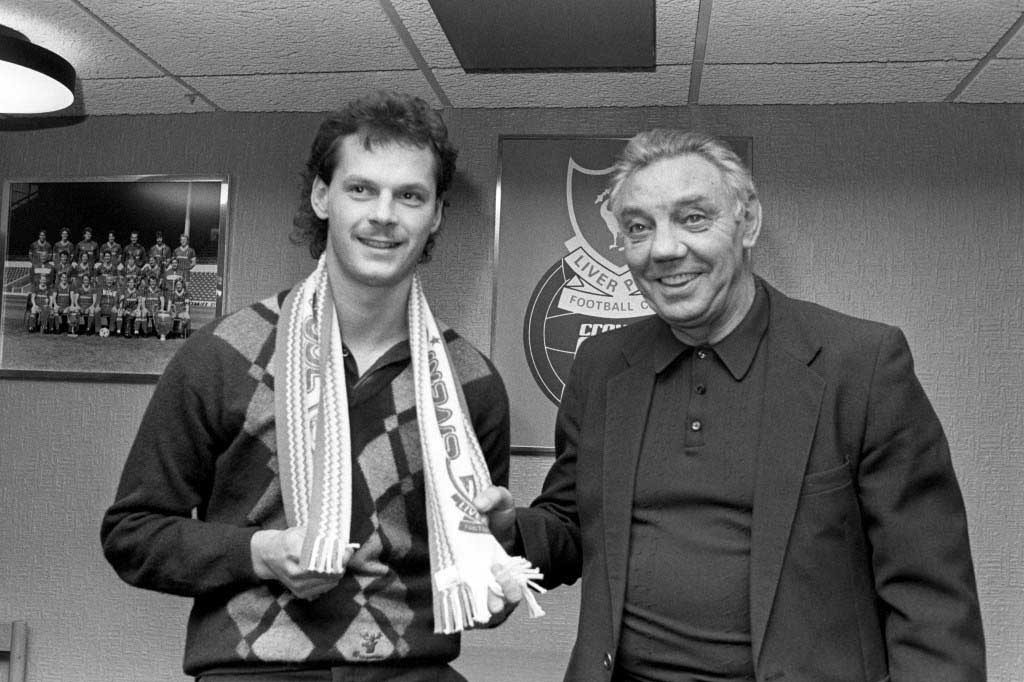
The acerbic Anfield throng of the mid-1980s hated poor Kevin MacDonald, and the main reason was that he wasn’t Graeme Souness. There was a mild resemblance, with curly dark hair and a moustache but there the similarity ended.
Joe Fagan had identified McDonald — signed from Leicester City — to plug the gap left behind by Souness’s departure for Sampdoria in the summer of 1984. Comparisons were inevitable but they were entirely different players. Souness wasn’t quick but played in effective bursts. MacDonald could run all day, without being terribly blessed with pace, but his long, loping stride gave the impression of a man running in slow-motion. It looked as though Adidas has specially commissioned, just for Kevin, a prototype Copa Mundial boot made out of the finest lead.
Where Souness glided, Kevin toiled, as though playing in treacle. With hindsight, the comparisons were entirely unfair as Souness — the epitome of silk and steel — remains the finest midfielder ever to don the Red shirt. MacDonald was an honest pro who ran all day, niggled the opposition, kept the ball well and gave simple accurate passes to better players.
The sad, droopy moustache, hangdog expression, receding hairline and the impression of a man running into a force 10 gale made him an obvious target for the boo-boys as Liverpool struggled throughout 1984-85.
MacDonald regained his place in the early part of Kenny Dalglish’s debut season as player-manager only to fall victim to a broken arm. By then Dalglish had already recognised the need for midfield reinforcements to properly address the void left by Souness. In effect, Dalglish replaced Souness with two players; Jan Molby’s vision and passing and Steve McMahon’s tenacity being the driving force behind the League and FA Cup double of 1986. By a twist of fate though, an injury to McMahon saw MacDonald deputise in the cup final win over Everton when the Scot totally subdued the Blues’ Peter Reid in the middle, though the plaudits that came his way stemmed from the dressing room not the terraces.
Kevin’s renaissance under Dalglish, who recognised his worth as a foot soldier, continued into the following season until his short Liverpool career was ended by a tragic broken leg at Southampton. MacDonald had far from won over the crowd, but the mild acceptance that he had earned from the faithful was cut down in its prime.
Ronnie Whelan
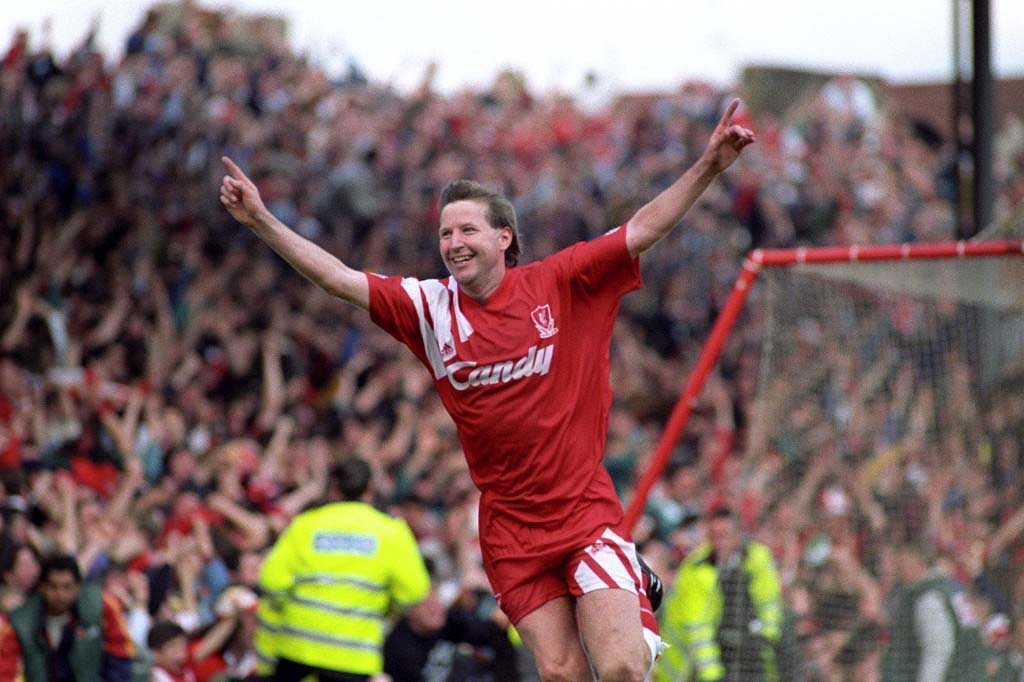
Ronnie Whelan the pundit hasn’t done himself any favours with Liverpool supporters in recent years. An apparent inability to temper criticism of Rafa Benitez during the worst excesses of Hicks and Gillett — and openly admitting his childhood preference for Man United — stained what remains of a reputation forged through a trophy-laden 15 years at Anfield.
In truth, his popularity waned during his time as a player after being a big favourite in his formative years after signing from Home Farm in Ireland. A goal on his debut helped build a rapport with the Kop which was cemented by Milk Cup Final winners in consecutive years. A right-footed, left-sided replacement for Ray Kennedy, Whelan was never the cerebral presence of his predecessor, but the fans warmed to his galloping runs and unerring ability to register crucial goals from midfield. His emergence coincided with that of Ian Rush as Paisley fashioned his last great Liverpool team.
When Dalglish succeeded Paisley, the versatile Whelan started getting shifted around, sometimes to left-back; occasionally to his more natural right flank. His consistency levels dropped and while Rush’s goals guaranteed ongoing acclaim, Whelan’s rank in a list of Kop favourites saw him drop behind the cult of Paul Walsh and the willing legs of scatterbrain Craig Johnston.
Whelan’s adaptability saw another shift once John Barnes and Peter Beardsley arrived to sprinkle stardust over the more functional remains of the 1986 double winners. In tandem with Steve McMahon, with Barnes and Ray Houghton either side, Whelan adopted the role of the modern-day sitting midfield anchor, affording more expressive talents the opportunity to wreak havoc elsewhere.
Whelan’s intelligent dirty work — and he knew how to put his foot in — went largely unnoticed. It was hard to find fault with a Liverpool team that swept all before them, while displaying a hitherto unseen panache. Local boys John Aldridge and McMahon connected with the crowd while the genius of Barnes and Beardsley put the hidden efforts of Whelan in the shade. Even at 4-0 up with half an hour to play there was still sniping and carping; the very oxygen of the Main Stand and Kemlyn Road veterans — and it usually ended up at Whelan’s door as early memories of a coltish midfield runner faded quickly.
Under Graeme Souness, Whelan suffered injuries and gained weight but remained a senior player. A lack of discipline was endemic throughout the squad with plentiful targets for fans’ venom as Liverpool rapidly plumbed depths that were anathema to two generations brought up on success. A hefty Whelan though, met with more than his fair share of grief as the crowd opted for the familiar as the recipient of their contempt. The early popularity of the exuberant Wembley hero became a distant memory as the esteem for the latter day Whelan flatlined to a bloated zero.
Lucas Leiva
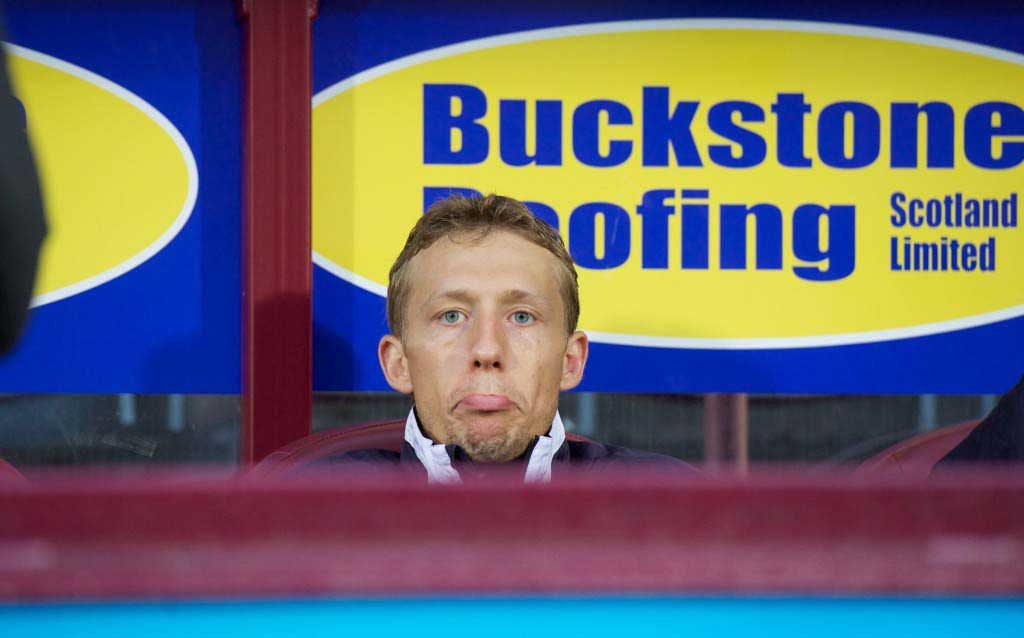
When Lucas Leiva arrived at Liverpool from Brazil’s Gremio in 2007 he couldn’t possibly have predicted that he would become a target for disaffected supporters’ growing frustration with manager, Rafa Benitez.
Lucas came to Liverpool with a reputation as a surging, box-to-box midfielder of no little promise as a winner of the Bola de Ouro prize awarded to the best player in the Brazilian League. Previous winners of the same award such as Zico, Falcao, Careca, Romario and Kaka only elevated expectations of the 20 year old.
A goal from 25 yards in an early Anfield appearance against Havant & Waterlooville in the FA Cup confirmed his promise but it was significant that the afternoon is remembered best for the in-fighting on the Kop which symbolised concerns held by supporters over the running of the club by Tom Hicks and George Gillett. However, protests against the owners were shouted down by the majority, as battle lines for an Anfield civil war which would last fully three years were drawn.
Despite Liverpool challenging consistently in the Champions League and mounting a serious title assault the following 2008-09 season, many supporters chose to direct their angst at the manager while remaining blind to the worst of the concurrent duplicity in the boardroom. Benitez’s detractors accused of him of being overly negative and insisting on two holding midfielders, one of whom would be Lucas -occasionally deputising for Xabi Alonso or Javier Mascherano.
Lucas, lacking the pace to replicate the running style of his days in Brazil, adapted his game to a more defensive model in the holding role but was accused of unadventurous sideways passing and clumsiness in the tackle. A penalty given away at Wigan costing two crucial points and a sending off for two ungainly fouls in a cup replay at Goodison Park gave ammunition aplenty to his critics.
As the scarcely credible calls for Benitez’s head — in the midst of a title challenge — grew apace, Lucas became an on-field target for the manager’s staunchest enemies. Labelled “a crab” and worse, Lucas was compared unfavourably with local lad Jay Spearing who had barely featured in the first team. Benitez’s public support for the player only intensified the criticism and Lucas was openly booed on to the field as a 70th minute substitute against Sunderland as Liverpool’s title charge faltered in the Spring.
Ironically, when the wheels fell off completely during the following season — which would prove to be the last before Benitez was finally bulleted by the American owners’ cast of vultures and hyenas — Lucas gained some grudging respect for his filling of the void left by the departed Xabi Alonso. Initially left out by Roy Hodgson, he won back his place and blossomed again under Kenny Dalglish until a serious knee injury put paid to his development into one of the most effective defensive midfielders in the Premier League.
Of course, his role at the club is now of a squad player, but he still divides opinion. Amid current concerns over the defensive shield in front of Liverpool’s porous defence some would argue he provides a more solid base than Steven Gerrard. Old habits die hard for others though, and for those who remain as firmly anti-Lucas, even with Benitez long departed, the prospect of a regular return for Lucas Leiva brings only froth to the lips.
LIVERPOOL: THE STORY OF THE BOOS
Pics: David Rawcliffe/PA Images
[rpfc_recent_posts_from_category]

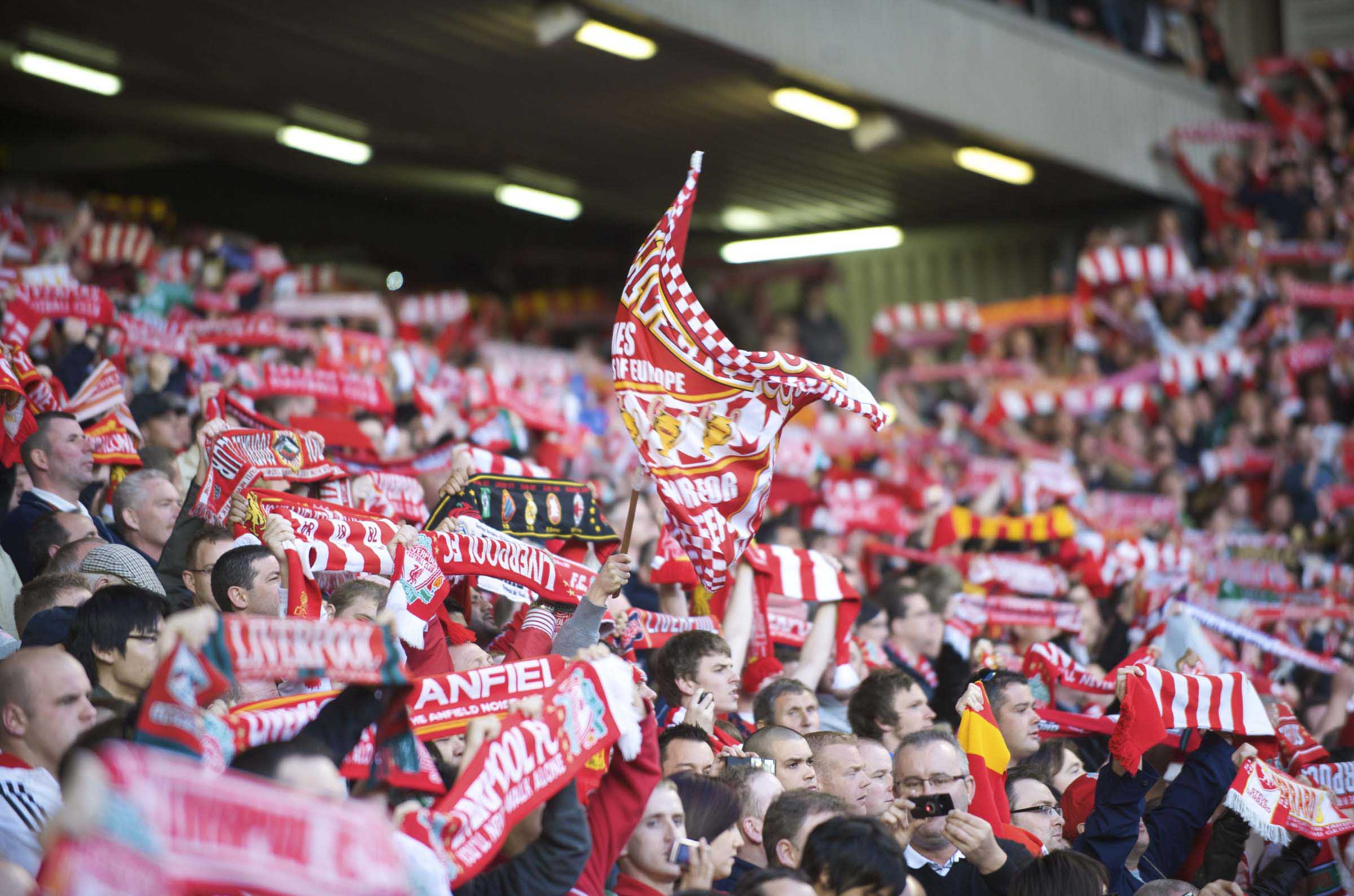










Really interesting article – as a 26 year old it surprises me to see Sammy Lee on this list, as I was under the impression that he was (and is) held in high regard for his long service
He was also slightly before my time but I’ve still got a foot-high Sammy Lee soft toy that an elderly relative knitted me as a small child. It had no discernible features, but “little Sammy Lee” was from then on immortalised forever in our household.
Poor Kevin MacDonald never stood a chance. Souness had been immense, as a player he embodied Liverpool’s competitive spirit, he was a winner, through and through. He was the first player we were unable to replace in my lifetime and his departure was arguably the beginning of the end. Kenny’s great sides look more and more like a swansong from this distance. Molby was a superb player, Whelan and McMahon were stupendous for a couple of seasons (Whelan was the nearest we got to replacing Souness from within, he knitted the game together and knew when to put the boot in), but Souness was a once in a lifetime player: leader, creator, conductor, holder, scorer of great goals, he was the most complete British midfielder of his and subsequent generations, he dominated whole seasons, not minutes. Good as McMahon and Whelan were, can anyone imagine a Liverpool team led by Souness losing that game at Arsenal or the Cup Final to Wimbledon? Can you imagine Vinnie Jones intimidating Souness? He was a colossus.
Had to smile when reading that – I had almost that exact conversation with a mate a few days ago. He’s younger than me and was wishing we had someone like McMahon in the current team; when he first started going to the match, McMahon was the main man. I said, ‘You never saw Souness. When he walked onto the pitch before a game I just thought; Y’know what? It’s actually impossible for us to get beat.’ And it usually was. Even strutting around the pitch at the kick-in he exuded such a unique air of self-belief, incredible brilliance coupled with incredible menace, that you felt the team was invincible. I’d still have him in an all-time World XI.
Exactly. He had an aura of invincibility. I always remember the goal he scored for Scotland v Russia (a game usually remembered for the Hansen/Willie Miller cock-up) ; Scotland needed to score to stand any chance of going through and he decided that nothing was going to get in his way. He just strolled through from the centre of midfield with a face on, no-one was going to stop him. No-one did.
Today’s Daily Mail has an article about Rodgers assessment of Balotelli. I’m sorry all you ‘in Brendan we trust’ fans – he is a graceless cunt.
That makes two of you then, clearly.
I think you are confusing open and mass booing with disgruntled comment and attitude. I have been an ever present, apart from illness and the odd family occasion throughout the careers of 4 of those players (not Balmer!) I have never heard mass booing of any Liverpool player. Either I’m delusional or have a terrible memory. The only booing or graceless jeering, as it was, I can recall was the disgraceful episode when Lucas was on the receiving end of a minority when he was subbed against Fulham in 2008. I was at the Sunderland game you cite and didn’t hear any such booing. I was in the deathly quiet Main Stand so I would have noticed.
I know the make up of the crowd has changed dramatically in the last 10 years or, and will change even more as prices rise and the new stand is populated by corporates, but I do hope the support our players get remains second to none.
Whisper it quietly but the late Gary Ablett could easily be mentioned in the above list.
I remember a game at Forest in the late 80’s when he was given a run around by their winger [Parker?] and the vitriol from our fans in the away end was constant. Many a loud groan was heard when his name was announced in the team on the tannoy – even as sub.
Personal preferences would be Oyvind Leonhardsen – an honest pro who was shite – and the worst midfielder I have ever witnessed in a red shirt, the gormless Igor Biscan.
My first games were late 1970s when the side was excellent. Boos were present every single game. Even when watching the incredible late 80s side, boo-boys were present, as was a silent Anfield. All this blaming OOTers, day trippers, wools etc for the poor atmosphere today are clearly from people that never went to Anfield when the club was the best in the land.
I was at the game (I think it might have been Villa away) – and joined in the chant “He’s fat, he’s round etc” but I can guarantee that was TOTALLY in fun. We’d just scored and the crowd celebrated each member of the bench in turn with their chant/song – and the song away fans sang at Sammy just flowed naturally on. I saw the rest of the bench enjoying the fun at Sammy’s expense.
Reading pauloffinlands comment re Graeme Souness, i would say it sums up where the clubs decline began. In that unforgettable night in Rome, Souness produced arguably his finest ever performance, he was head and shoulders above every other player, but while his on the field performances are fondly remembered, just as important was his influence off the field. Michael Robinson recalls Souness going round each player shouting and urging them on, there was no complacency, the game was approached as if we where playing Barcelona. Roy Keane would go on to have the same influence at Manchester United, other players, especially new ones, would be left in no doubt just what was expected of them representing the club. Souness explains in his chapter in Men in White Suits, that his transfer was viewed as “good business sense” by the club, good business sense maybe, but not good football sense. It is also hard to imagine Liverpool surrendering the league so easily the following season, and losing out to United in the FA cup semi- final. I agree, Souness was the one player we never replaced, and along with the loss of Mark Lawrenson(who Dalglish chose not to replace), our gradual decline can be traced back to the loss of those legends.